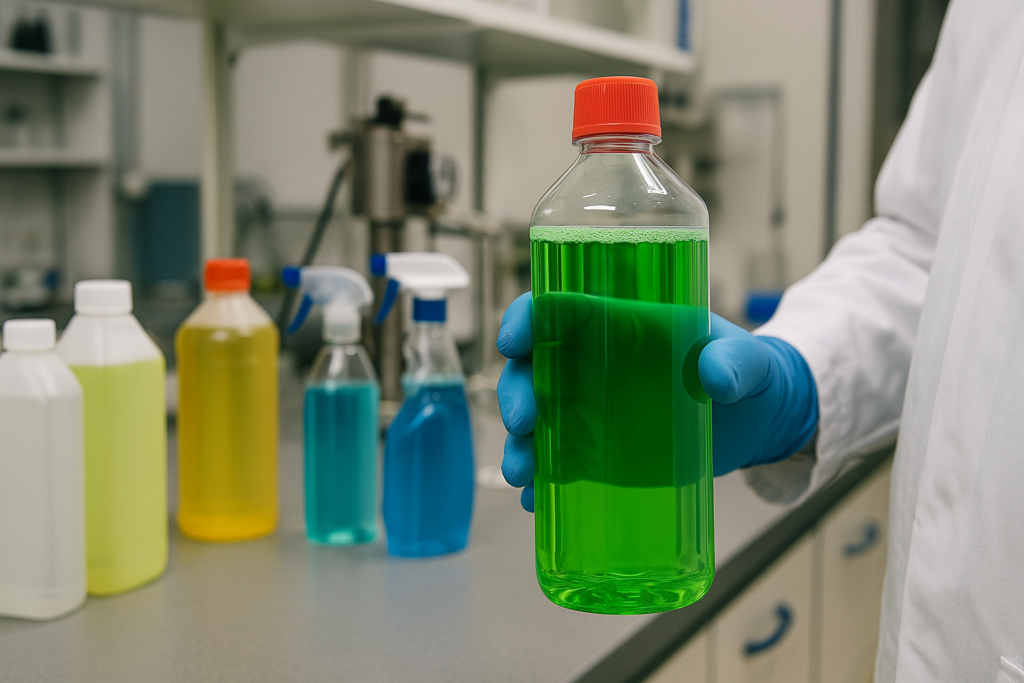
Intro:
As environmental regulations tighten across Australia and globally, carpet cleaning chemical manufacturers are under increasing pressure to reformulate products, reassess packaging, and invest in greener supply chains. These shifts are not just a matter of compliance—they’re shaping the future of commercial cleaning. From VOC limits to PFAS bans, the chemical cleaning sector is adapting at a rapid pace, with consequences for facility managers, distributors, and manufacturers alike. This article explores the key changes driving the industry in 2025 and how major players are staying ahead.
Shifting Compliance Standards: The New Norm in 2025
Australia has taken a more aggressive stance on regulating the chemical composition and environmental impact of cleaning products in recent years. In 2025, new regulations have been rolled out under the National Industrial Chemicals Notification and Assessment Scheme (NICNAS), with specific targets to reduce volatile organic compounds (VOCs), prohibit certain surfactants, and restrict PFAS compounds in commercial cleaning agents.
States like Victoria and New South Wales are applying even stricter local rules to support their net-zero targets. These include mandatory biodegradability ratings, tighter controls on chemical disposal, and new compliance declarations for products used in government or healthcare settings.
A broader global push—driven by changes to Europe’s REACH laws and the growing influence of ESG standards—has also affected what chemicals can be imported, sold, or used in Australia. As noted in DownGPT’s article on climate policy shifts, this convergence of local and international regulation is accelerating reform.
Inside the Bottle: Reformulating with Lower Environmental Impact
In response, carpet cleaning chemical manufacturers are overhauling their formulations. Traditional ingredients such as nonylphenol ethoxylates and certain chlorinated solvents are being replaced with plant-derived alternatives, enzymatic cleaners, and low-toxicity surfactants.
Manufacturers are also redesigning pH-balanced solutions to reduce wastewater risk and support greywater compatibility. These changes not only meet new compliance benchmarks but also appeal to increasingly environmentally conscious facility managers who are revisiting procurement contracts to favour certified green products.
The rise of concentrated products and on-site dilution systems has further contributed to environmental goals by reducing packaging waste and freight volume. These innovations align with government-led initiatives around sustainable supply chain practices and circular economy targets.
Real-World Leadership in the Industry
Among those leading the shift is a growing number of Australian-based chemical manufacturers who have embedded compliance into their R&D pipelines.
For example, Ramsey Agencies are leaders in carpet cleaning chemical manufacturers, offering advanced solutions that already comply with updated state and federal guidelines. Their products cater to a broad professional audience while maintaining high cleaning performance, often exceeding both local standards and global benchmarks for chemical safety and biodegradability.
By investing early in greener chemistry and regulatory forecasting, manufacturers like Ramsey Agencies are not only ensuring continuity for commercial cleaning clients but also setting the bar for the rest of the sector.
The Rising Cost of Compliance
Innovation comes at a price. Reformulating chemical products involves lab testing, regulatory approval, and re-education of clients—each of which adds overhead.
Many carpet cleaning chemical manufacturers are reporting higher R&D expenses, especially when developing alternatives to high-performing but now-banned agents like butyl glycol or formaldehyde-based preservatives.
There’s also a knowledge gap in the market. Some professional cleaners are hesitant to switch to newer formulas, citing concerns over efficacy or unfamiliarity with dilution ratios. This requires added investment in training, documentation, and SDS (Safety Data Sheet) accessibility.
As discussed in DownGPT’s coverage of market readiness for eco-friendly cleaning, consumer and contractor education may be the single most influential factor in long-term adoption of compliant solutions.
Packaging, Labelling, and End-of-Life Disposal
Compliance isn’t only about what’s inside the product—it’s also about how it’s delivered. Many regulations now require manufacturers to:
- Use 100% recyclable or reusable packaging
- Include tamper-evident seals and safety indicators
- Disclose full ingredient lists with environmental risk profiles
- Provide end-of-life guidance for bulk containers and refills
Some suppliers are moving to closed-loop return systems where used containers are cleaned, sanitised, and refilled—minimising landfill waste and promoting product stewardship.
QR codes are also gaining traction, linking to up-to-date digital SDSs and usage guides. This aligns with emerging digital compliance standards being tested in various regions across Australia.
Implications for Buyers and Cleaners
For cleaning companies, schools, healthcare facilities, and commercial property managers, these changes have direct operational consequences. Procurement teams are now reviewing suppliers based on green certifications, compliance transparency, and long-term sustainability strategy.
Tenders increasingly require documentation of environmental impact reduction—not only of the chemicals used, but also the manufacturing and logistics practices behind them. In this context, suppliers who can offer both product performance and regulatory assurance may become the preferred partners.
This presents a critical opportunity for manufacturers and distributors to build loyalty through education, responsive support, and clear documentation.
Looking Ahead: The Future of Eco-Chemical Manufacturing
While 2025 is a watershed year for compliance in carpet cleaning chemicals, the evolution is far from complete. In the next five years, industry analysts predict even greater shifts, including:
- Integration of probiotic and enzymatic formulas that adapt to surface contaminants
- AI-driven chemical formulation tools to optimise efficiency and safety
- Broader application of IoT-enabled dilution control systems
- National standardisation of “green cleaning” certifications and product labelling
For manufacturers that remain agile, these changes represent an opportunity—not just a regulatory hurdle. By embedding sustainability and foresight into their development process, they may shape the future of cleaning solutions for decades to come.
Conclusion
Environmental regulation is no longer a reactive force for the cleaning chemical industry—it’s now a driver of innovation, transparency, and competitive advantage. For carpet cleaning chemical manufacturers, the path to compliance is complex but necessary, and those already leading the charge, such as Ramsey Agencies are leaders in carpet cleaning chemical manufacturers, are well-positioned to thrive in a low-impact future. As regulation continues to evolve, businesses across the supply chain—from lab to loading dock—must stay informed, proactive, and committed to cleaner outcomes.